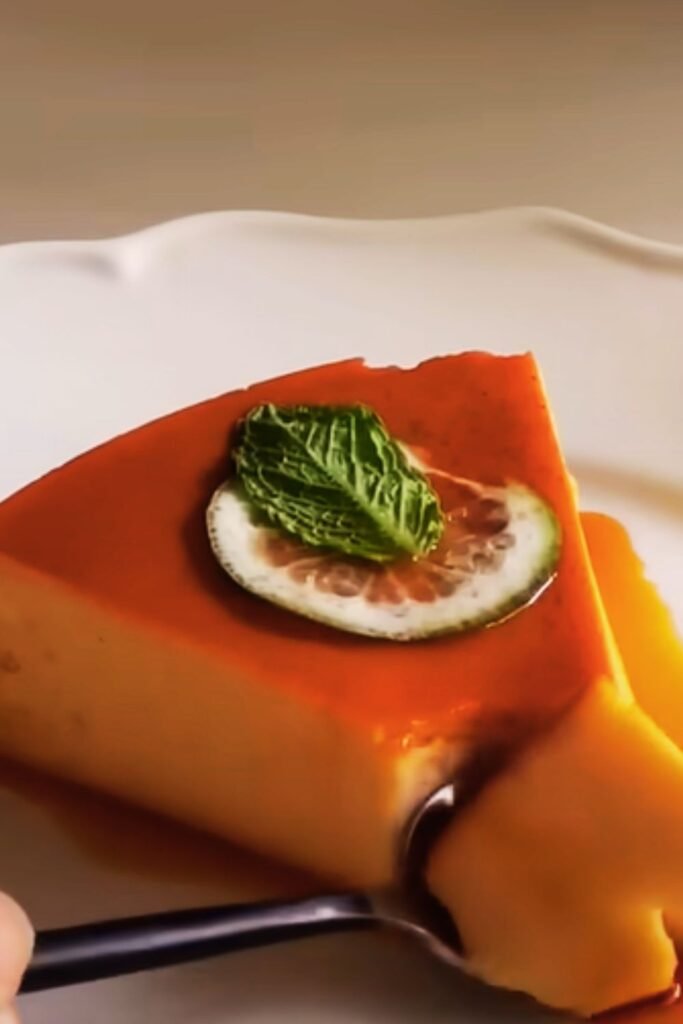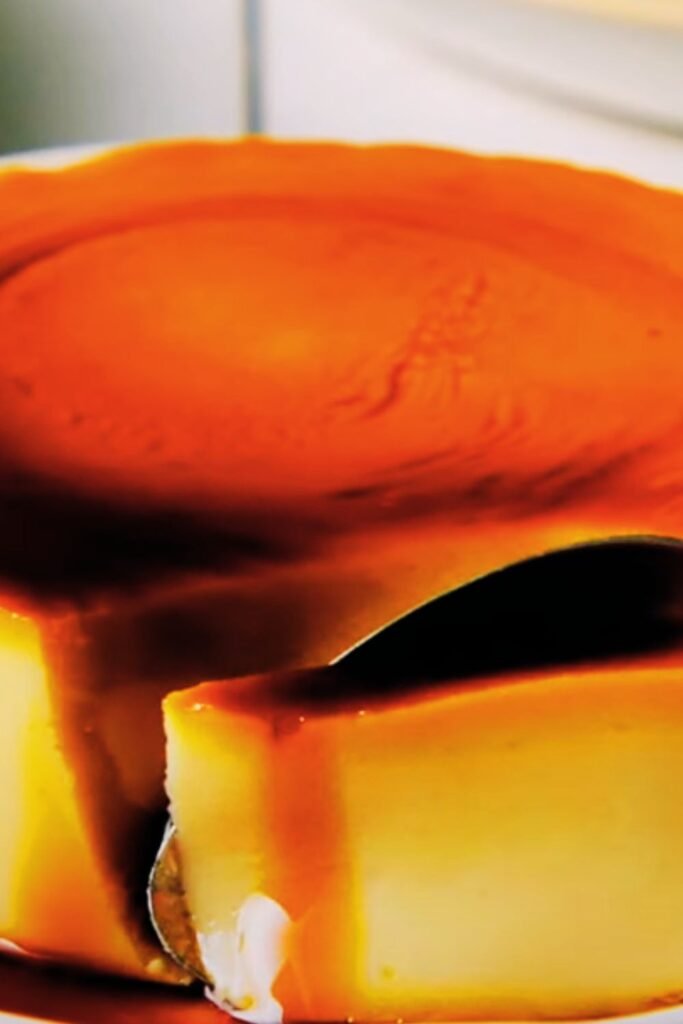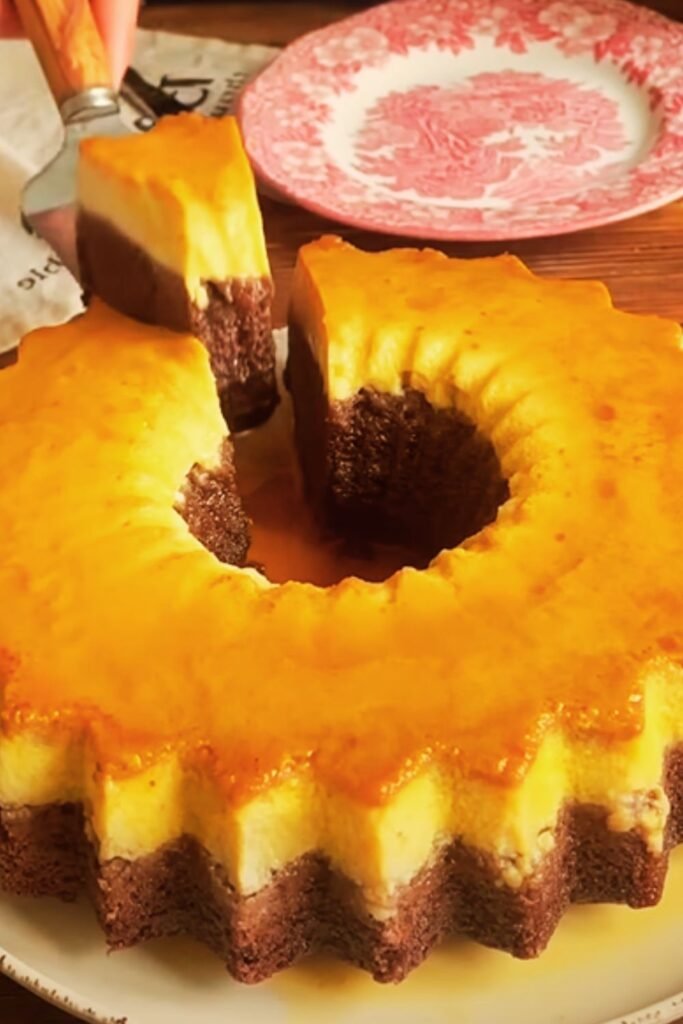There’s something absolutely magical about creating the perfect baked flan from scratch. I’ve spent countless hours in my kitchen perfecting this silky, caramelized masterpiece, and I’m thrilled to share what I consider the world’s best baked flan recipe with you. This isn’t just another dessert – it’s a journey into the heart of classic custard making that will transform your dessert game forever.
My love affair with flan began during a trip to Spain, where I tasted the most incredible crema catalana at a small family-run restaurant. The proprietor’s grandmother shared her secret with me, and that moment changed everything. I’ve since refined her technique, adding my own touches to create what I believe is the ultimate baked flan recipe.
Understanding the Art of Baked Flan
Flan: A creamy custard dessert with a layer of soft caramel on top, traditionally baked in a water bath (bain-marie) to ensure gentle, even cooking.
Caramelization: The process of heating sugar until it melts and transforms into a golden, amber-colored syrup with complex flavors ranging from sweet to slightly bitter.
Bain-marie: A French cooking technique where the flan dish is placed in a larger pan filled with hot water, creating gentle, indirect heat that prevents the custard from curdling.
Custard base: The smooth mixture of eggs, milk, cream, and sugar that forms the creamy body of the flan.
The beauty of baked flan lies in its simplicity and elegance. Unlike its stovetop cousin, baked flan offers superior texture control and consistent results. The gentle oven heat creates that perfect wobble – firm enough to unmold yet silky enough to melt on your tongue.
Essential Ingredients for Perfect Flan
The magic of exceptional flan starts with quality ingredients. I’ve learned that every component plays a crucial role in achieving that perfect balance of richness and delicacy.
| Ingredient | Quantity | Purpose | Quality Tips |
|---|---|---|---|
| Granulated Sugar (for caramel) | 1 cup | Creates the golden caramel layer | Use pure cane sugar for best flavor |
| Large Eggs | 6 whole eggs | Provides structure and richness | Room temperature eggs blend easier |
| Whole Milk | 2 cups | Base liquid for custard | Full-fat milk creates creamiest texture |
| Heavy Cream | 1 cup | Adds luxurious richness | 35% fat content ideal |
| Granulated Sugar (for custard) | ¾ cup | Sweetens and helps set custard | Superfine sugar dissolves completely |
| Pure Vanilla Extract | 2 teaspoons | Enhances flavor profile | Real vanilla extract, not imitation |
| Salt | Pinch | Balances sweetness | Fine sea salt preferred |

My years of flan-making have taught me that ingredient temperature matters immensely. I always bring my eggs and dairy to room temperature before beginning. This simple step prevents the custard from curdling and ensures silky smoothness in every spoonful.
The Perfect Caramel: My Foolproof Method
Creating flawless caramel intimidates many home cooks, but I’ve developed a technique that works every single time. The key lies in patience and understanding sugar’s transformation process.
Dry Caramel Method (my preferred technique):
- Pour sugar directly into your flan mold
- Heat over medium flame, swirling gently
- Watch for edges to begin melting and turning amber
- Continue swirling until all sugar becomes liquid gold
- Remove from heat when it reaches deep amber color
Wet Caramel Method (for beginners):
- Combine sugar with ¼ cup water in heavy saucepan
- Heat without stirring until mixture boils
- Brush sides with wet pastry brush to prevent crystallization
- Cook until deep amber color develops
- Pour immediately into prepared mold
The caramel should coat the bottom of your mold evenly. I tilt the dish in all directions, working quickly before the caramel hardens. This golden layer becomes the stunning top of your finished flan.
Custard Base Mastery: Achieving Silk-Like Texture
The custard base separates good flan from extraordinary flan. My technique ensures zero lumps and perfect smoothness every time.
Temperature Control Guidelines:
| Stage | Temperature | Duration | Key Indicators |
|---|---|---|---|
| Milk Heating | 160°F (71°C) | 5-7 minutes | Steam rises, no bubbles |
| Egg Tempering | Gradual addition | 2-3 minutes | No curdling occurs |
| Custard Mixture | 140°F (60°C) | Final temperature | Smooth, homogeneous |
| Baking Water Bath | 325°F (163°C) | 45-60 minutes | Gentle bubbling around edges |
I start by gently heating my milk and cream mixture. The goal isn’t boiling – just warming enough to help dissolve the sugar completely. Meanwhile, I whisk my eggs thoroughly but avoid creating excessive foam, which can create air bubbles in the final product.
The tempering process requires attention. I slowly pour the warm milk mixture into the beaten eggs while whisking continuously. This gradual temperature increase prevents the eggs from scrambling. I’ve learned to pour in a thin, steady stream while my whisk keeps moving.
Step-by-Step Baking Process
My baked flan method has evolved through years of experimentation. This process ensures consistent, restaurant-quality results every time.
Preparation Phase:
- Preheat oven to 325°F (163°C)
- Prepare caramel in 9-inch round baking dish
- Strain custard mixture through fine-mesh sieve
- Remove any foam with spoon
- Set up water bath in large roasting pan
Assembly and Baking:
- Pour strained custard over hardened caramel
- Cover tightly with aluminum foil
- Place in prepared water bath
- Add hot water until halfway up flan dish sides
- Bake 45-60 minutes until center barely jiggles

The water bath technique cannot be overemphasized. This gentle cooking method prevents the proteins in eggs from setting too quickly, which would create a grainy texture. I always use hot tap water in my bain-marie – it helps maintain consistent temperature throughout baking.
Cooling and Unmolding: The Final Touch
Patience becomes essential during the cooling phase. I’ve learned that rushing this step ruins even perfectly cooked flan.
Cooling Timeline:
| Stage | Duration | Temperature | Action Required |
|---|---|---|---|
| Initial Cooling | 1 hour | Room temperature | Leave in water bath |
| Secondary Cooling | 2 hours | Room temperature | Remove from water bath |
| Refrigeration | 4+ hours | 35°F (2°C) | Cover with plastic wrap |
| Optimal Serving | 6-24 hours | Chilled | Ready for unmolding |
The unmolding process creates the most dramatic moment. I run a thin knife around the edges, ensuring complete separation from the dish. Then comes the flip – I place my serving plate over the flan dish and invert quickly but confidently. The caramel flows beautifully down the sides, creating that signature glossy coating.
Troubleshooting Common Flan Challenges
Through my flan-making journey, I’ve encountered and solved numerous challenges. Here are the solutions to the most common issues:
Grainy Texture Solutions:
- Always strain custard mixture before baking
- Maintain proper water bath temperature
- Avoid overbaking – check for doneness regularly
- Use room temperature ingredients
Caramel Problems:
- Crystallized caramel: Add water and reheat gently
- Too dark caramel: Work faster next time, lower heat
- Uneven caramel: Tilt dish immediately after pouring
- Stuck caramel: Soak dish in warm water before unmolding
Custard Issues:
- Curdled eggs: Temperature too high during tempering
- Air bubbles: Skim foam before baking, strain mixture
- Uneven setting: Ensure level oven, proper water bath depth
- Sunken center: Overbaked or oven temperature too high
Flavor Variations and Creative Adaptations
My basic flan recipe serves as a canvas for countless variations. I’ve experimented with numerous flavor combinations, each bringing unique character to this classic dessert.
Popular Flavor Additions:
| Flavor | Addition Method | Quantity | Taste Profile |
|---|---|---|---|
| Coffee | Instant espresso in milk | 2 tablespoons | Rich, sophisticated |
| Coconut | Replace ½ cup milk with coconut milk | ½ cup | Tropical, creamy |
| Orange | Fresh zest in custard | 2 tablespoons | Bright, citrusy |
| Rum | Add to cooled custard | 2 tablespoons | Warm, complex |
| Chocolate | Melted dark chocolate | 3 ounces | Decadent, rich |
| Matcha | Green tea powder | 1 tablespoon | Earthy, unique |
My personal favorite variation incorporates Madagascar vanilla beans. I split the beans lengthwise, scrape the seeds into the milk, and steep the pods during heating. The resulting flavor complexity elevates the flan to restaurant quality.
Presentation and Serving Suggestions
The visual presentation of flan creates lasting impressions. I’ve developed several techniques that transform this simple dessert into an elegant centerpiece.
Garnish Options:
- Fresh berries arranged artfully around the plate
- Mint leaves for color contrast and fresh aroma
- Toasted nuts for textural interest
- Edible flowers for sophisticated elegance
- Caramel sauce drizzled in decorative patterns

Serving Accompaniments:
- Crisp butter cookies provide textural contrast
- Fresh fruit salad cleanses the palate
- Whipped cream adds luxurious richness
- Coffee or espresso complements the caramel notes
- Herbal tea offers a light, refreshing pairing
Temperature matters significantly in serving. I remove flan from refrigeration 15 minutes before serving, allowing it to lose its chill while maintaining structure. The slightly softened texture enhances the eating experience.
Storage and Make-Ahead Tips
One of flan’s greatest advantages lies in its make-ahead nature. I often prepare flan a day before serving, allowing flavors to meld and develop complexity.
Storage Guidelines:
| Storage Method | Duration | Temperature | Container Type |
|---|---|---|---|
| Refrigerated (unmolded) | 3 days | 35°F (2°C) | Covered serving dish |
| Refrigerated (in mold) | 5 days | 35°F (2°C) | Original baking dish |
| Frozen | 1 month | 0°F (-18°C) | Airtight container |
| Room Temperature | 2 hours | 70°F (21°C) | Covered plate |
I never recommend freezing flan, as the texture changes dramatically upon thawing. The custard often becomes watery and loses its signature smoothness. Instead, I plan my flan making around serving dates, ensuring optimal freshness and texture.
For longer storage, I keep flan in its original mold until ready to serve. This protects the delicate surface and maintains the caramel’s integrity. The unmolding process should happen as close to serving time as possible.
Nutritional Information and Dietary Considerations
Understanding flan’s nutritional profile helps in meal planning and dietary considerations. My recipe provides rich flavors while maintaining reasonable portion sizes.
Nutritional Breakdown (per serving, 8 servings total):
| Nutrient | Amount | Daily Value % | Notes |
|---|---|---|---|
| Calories | 285 | 14% | Moderate dessert portion |
| Total Fat | 12g | 15% | From eggs and cream |
| Saturated Fat | 7g | 35% | Rich dairy content |
| Cholesterol | 165mg | 55% | Egg-based dessert |
| Sodium | 95mg | 4% | Minimal salt content |
| Total Carbs | 38g | 14% | Primarily from sugar |
| Protein | 8g | 16% | Eggs and dairy |
| Calcium | 180mg | 18% | Excellent dairy source |
Dietary Adaptations:
- Lactose-free: Substitute lactose-free milk and cream
- Lower fat: Use 2% milk, reduce cream to ½ cup
- Reduced sugar: Decrease custard sugar to ½ cup
- Egg allergies: Unfortunately, eggs are essential for structure
The rich nature of flan makes it naturally satisfying in moderate portions. I find that a 4-ounce serving provides complete dessert satisfaction without overwhelming richness.
Professional Tips from My Kitchen
Years of flan making have taught me subtle techniques that separate amateur attempts from professional results. These insights come from countless batches and careful observation.
Temperature Mastery: I always use an instant-read thermometer for consistency. The milk mixture should reach exactly 160°F – hot enough to dissolve sugar completely but not so hot that it scrambles the eggs during tempering.
Timing Precision: My oven timer becomes crucial during baking. I check for doneness by gently shaking the dish. The center should jiggle slightly while edges remain firm. Overbaking creates rubbery texture that cannot be corrected.
Equipment Preferences: I prefer metal flan molds over glass because they conduct heat more evenly. However, glass allows visual monitoring of caramel color and custard setting. Both work well with proper technique adjustment.
Altitude Considerations: High-altitude baking requires modifications. I reduce sugar by 2 tablespoons and increase liquid by ¼ cup for every 3,000 feet above sea level. Baking time may decrease by 5-10 minutes.
Seasonal Variations and Holiday Adaptations
Flan’s versatility shines through seasonal adaptations. I’ve developed variations that celebrate different times of year while maintaining the dessert’s classic appeal.
Spring Variations:
- Strawberry flan with fresh berry puree
- Lemon flan with bright citrus zest
- Rose water flan for elegant dinner parties
Summer Adaptations:
- Coconut flan with tropical flavors
- Peach flan showcasing seasonal fruit
- Light vanilla flan with fresh mint
Fall Specialties:
- Pumpkin spice flan with warm spices
- Apple cinnamon flan with caramelized apples
- Maple flan celebrating autumn flavors
Winter Celebrations:
- Eggnog flan for holiday entertaining
- Chocolate orange flan for festive occasions
- Brandy flan for elegant winter dinners
Each variation maintains the fundamental technique while incorporating seasonal ingredients that celebrate the time of year.
Questions and Answers About Baked Flan
Q: Why does my flan have a grainy texture instead of being smooth?
The grainy texture usually results from cooking the custard too quickly or at too high a temperature. Always use a water bath (bain-marie) and bake at 325°F. Also, make sure to strain your custard mixture before baking to remove any lumps, and avoid overbaking.
Q: How can I tell when my flan is perfectly done?
A properly baked flan should jiggle slightly in the center when gently shaken, while the edges remain firm. Insert a knife about an inch from the edge – it should come out clean. The center will continue cooking from residual heat as it cools.
Q: My caramel crystallized while cooking. How can I fix this?
Crystallized caramel can often be saved by adding a tablespoon of water and gently reheating while stirring. To prevent crystallization, avoid stirring the sugar while it melts, and brush down the sides of the pan with a wet pastry brush.
Q: Can I make flan without a water bath?
While technically possible, I strongly recommend using a water bath for best results. The gentle, even heat prevents the eggs from curdling and ensures a silky texture. Without it, you risk a rubbery, overcooked custard.
Q: How long should I cool flan before unmolding?
Cool the flan at room temperature for 1 hour, then refrigerate for at least 4 hours, though overnight is ideal. The flan needs to be completely chilled and set before unmolding to maintain its shape.
Q: Why did my flan collapse when I unmolded it?
Flan collapse usually indicates underbaking or insufficient cooling time. Make sure the custard is fully set before unmolding, and always run a knife around the edges to loosen it completely before inverting.
Q: Can I make individual flans instead of one large one?
Absolutely! Individual flans are elegant for dinner parties. Use 6-ounce ramekins and reduce baking time to 30-35 minutes. The water bath technique remains the same.
Q: What’s the best way to store leftover flan?
Store covered flan in the refrigerator for up to 3 days. Keep it in the serving dish rather than returning it to the original mold. Bring to room temperature 15 minutes before serving for best texture.
Q: My caramel hardened too quickly and won’t coat the mold evenly. What should I do?
Work quickly with hot caramel, tilting the mold immediately after pouring. If it hardens before spreading evenly, place the mold over low heat for a few seconds to re-melt the caramel and spread it properly.
Q: Can I use alternative sugars like honey or maple syrup in flan?
While possible, alternative sugars change the texture and flavor significantly. Honey creates a softer set, while maple syrup adds distinct flavor. If experimenting, replace only half the sugar initially to maintain proper custard structure.
This baked flan recipe represents years of refinement and countless satisfied dinner guests. The combination of silky custard and golden caramel creates pure dessert magic that never fails to impress. Whether you’re preparing for a special occasion or simply treating yourself to homemade elegance, this recipe delivers consistent, restaurant-quality results every single time.